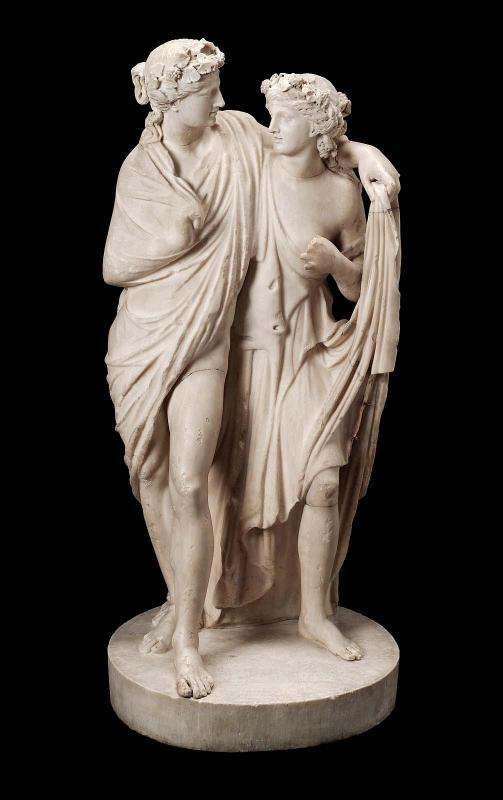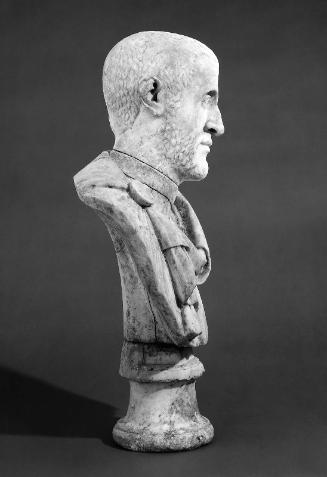Dionysos and maenad
about 1st–2nd century A.D.
Medium/TechniqueGreek and Italian marble,
DimensionsOverall: 88.9 x 43.2 cm (35 x 17 in.)
Credit LineGift of Paul E. Manheim
Accession number68.770
On View
On viewClassificationsSculpture
Collections
An ancient Roman sculptor probably carved this work as an image of the rustic god Priapos with a maenad, a member of the wine god Bacchus’s retinue. By the 18th century, all that remained was a fragment, composed mostly of the figures’ torsos and drapery. Selectively re-carved, and with heads and legs added, it became Bacchus and his beloved, Ariadne. Sculptors on the continent made an industry creating such confections, which well-heeled travelers on the Grand Tour avidly acquired. An English “milord” purchased this one, and it became part of a famous collection of antiquities at Marbury Hall in Cheshire.
ProvenanceBy 1833: seen by Count Clarac in the Smith Barry Collection, at Marbury Hall, Cheshire; in 1873: seen by Adolf Michaelis at Marbury Hall (A. Michaelis, Ancient Marbles in Great Britain [1882], p. 502, no. 4); by 1946: late Lord Barrymore Collection; 1946: with Sotheby (sold at auction, July 29, 1946 [cited in C. C. Vermeule, AJA 59, 1955, p. 142]); by 1966: Kevorkian Foundation Collection; 1966: with Parke-Bernet, 980 Madison Avenue, New York, N.Y. 10021 (Parke-Bernet auction of Kevorkian Foundation Collection, February 25-26, 1966, lot 270); 1966: with Jerome M. Eisenberg, 1000 Madison Avenue, New York (Art of the Ancient World 2, p. 97, illus.); by 1968: Paul E. Manheim Collection; gift of Paul E. Manheim to MFA, December 11, 1968
probably 2nd century A.D.
2nd half of the 1st century or early 2nd century AD
Early 1st century A.D.
530–515 B.C.
5th century
about A.D. 200
about A.D. 120
about 2nd century A.D. (after a Hellenistic Greek type)
second half of 2nd century A.D.
about 70–60 B.C.
150–100 B.C.















